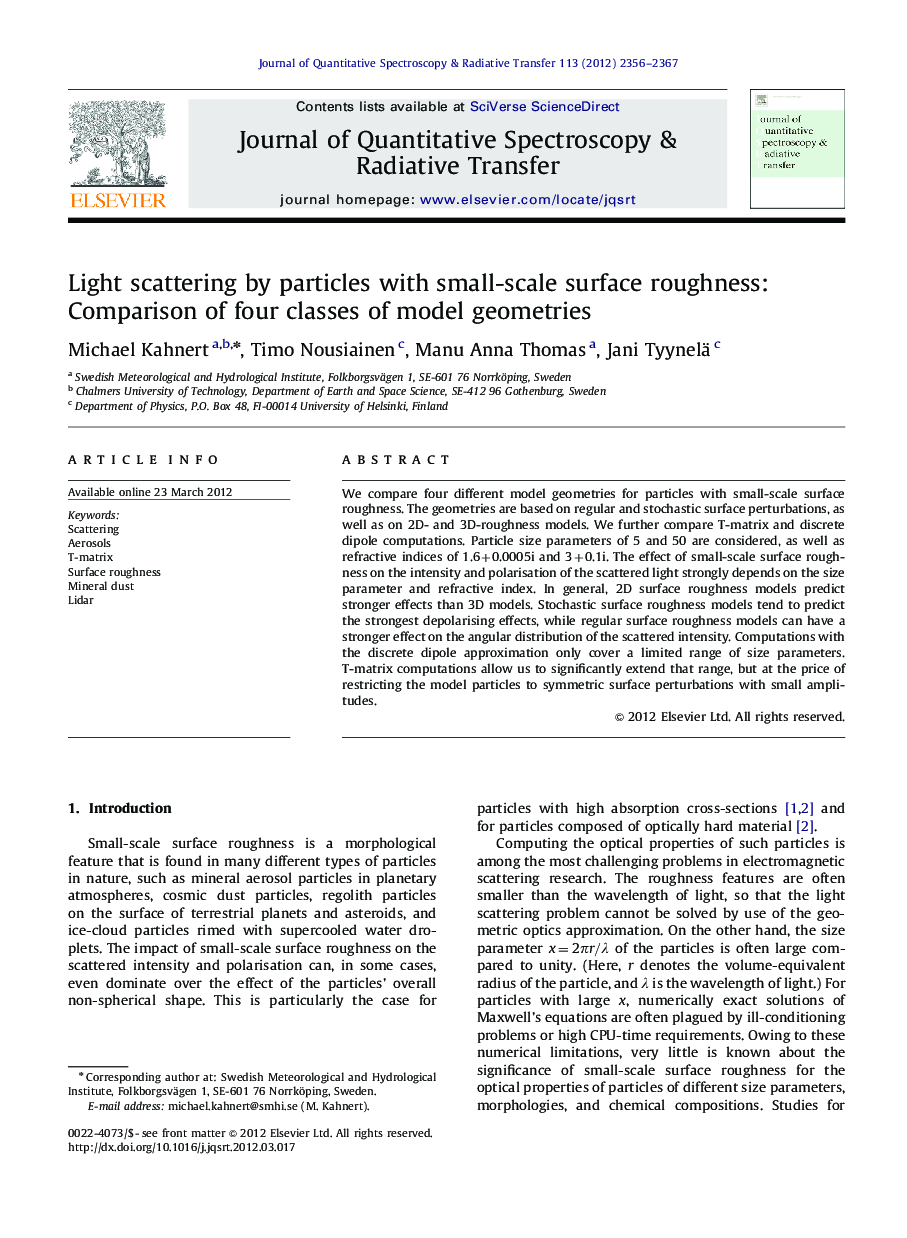| Article ID | Journal | Published Year | Pages | File Type |
|---|---|---|---|---|
| 5429098 | Journal of Quantitative Spectroscopy and Radiative Transfer | 2012 | 12 Pages |
We compare four different model geometries for particles with small-scale surface roughness. The geometries are based on regular and stochastic surface perturbations, as well as on 2D- and 3D-roughness models. We further compare T-matrix and discrete dipole computations. Particle size parameters of 5 and 50 are considered, as well as refractive indices of 1.6+0.0005i and 3+0.1i. The effect of small-scale surface roughness on the intensity and polarisation of the scattered light strongly depends on the size parameter and refractive index. In general, 2D surface roughness models predict stronger effects than 3D models. Stochastic surface roughness models tend to predict the strongest depolarising effects, while regular surface roughness models can have a stronger effect on the angular distribution of the scattered intensity. Computations with the discrete dipole approximation only cover a limited range of size parameters. T-matrix computations allow us to significantly extend that range, but at the price of restricting the model particles to symmetric surface perturbations with small amplitudes.
⺠Comparison of 2D, 3D, regular, and stochastic models for particles with small-scale surface roughness. ⺠Surface roughness effects differ strongly with size parameter, refractive index, and scattering angle. ⺠Choice of roughness model has very different effects on different elements of the Mueller matrix.
